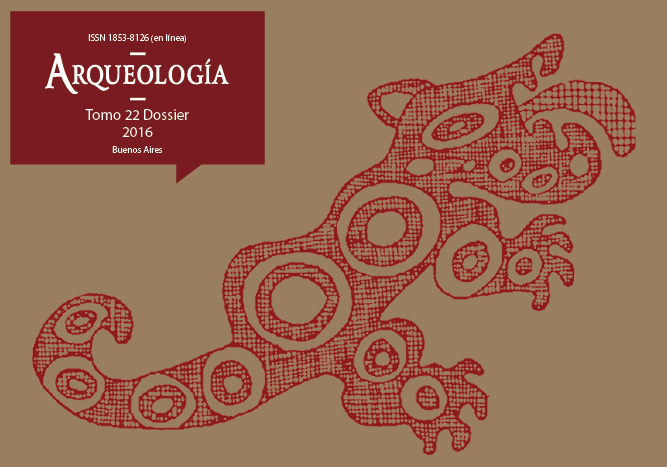Bone weathering in guanaco and Greater Rhea
Keywords:
Weathering, Experimental study, Guanaco, Greater Rhea, Ontogenetic development
Abstract
Bone weathering has been widely used in taphonomic and zooarchaeological analyses given its importance in assessing the integrity and the depositional context of archaeological materials. In this paper we present the results of a long-term experimental study undertaken on bones from guanacos of three different age classes, as well as an adult Greater Rhea, at eight years of exposure. The aim of this research was to evaluate if weathering differentially affected bones from both species, across the different age classes, and on diverse skeletal parts from the same carcass. Our results indicated that, in general terms, rhea bones weathered faster than the skeletal parts of guanaco belonging to the same age group. Likewise, guanaco bones belonging to immature individuals showed higher weathering rates than those from the adult, and after two years of exposure all the skeletal parts of the three guanacos presented some degree of weathering. Furthermore, guanaco skulls and teeth were the most affected elements across all three age classes. Finally, under increased exposure time, the axial skeleton showed slightly higher weathering stages than the appendicular skeleton. These preliminary results contribute to improving our understanding of the complexity inherent to the weathering process, while also building a more solid taphonomic database against which to model our archaeological expectations.Downloads
Download data is not yet available.
How to Cite
Gutiérrez, M. A., González, M. E., Álvarez, M. C., Massigoge, A., & Kaufmann, C. A. (1). Bone weathering in guanaco and Greater Rhea. Arqueología, 22(3), 57-84. https://doi.org/10.34096/arqueologia.t22.n0.3277
Section
Articles
Authors who publish in this journal agree to the following conditions:
- Authors retain copyright and yield to the journal right of first publication with the work registered with attribution license Creative Commons, which allows third parties to use the published always mentioning the authorship of the work and first publication in this magazine.
- Authors can make other independent and additional contractual arrangements for the non-exclusive distribution of the version of the article published in this issue (p. Eg., Inclusion in an institutional repository or publish it in a book), provided that clearly indicate that the work was published for the first time in this magazine.
- It allows and encourages the author / s to publish their work online (eg institutional or personal pages) before and during the process of revision and publication, as it can lead to productive exchanges and greater and more rapid dissemination of work published (See The Effect of Open Access).





(1)13.png)






1.jpg)
1.jpg)


13.png)
1.png)


(1)1.png)









